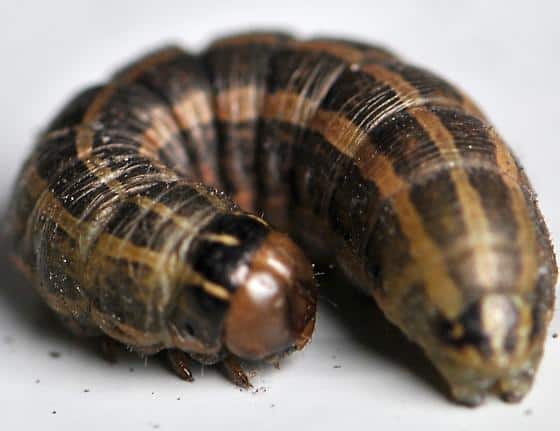Army Cutworm aka Miller Moth
Euxoa Auxiliaris
Here in the high desert of the Southwestern US, May brings with it not only strong winds but as you seek shelter from the wind you may find you are not the only creature seeking respite inside your home, or cabin or tent. Numerous armies of “Miller Moths” might be fluttering about inside with you. You’ll quickly realize how aptly named these Army Cutworm Moths are. They fill the air on a trail in front of you like smoke, bumping into you as they fumble about between trees and shrubs.
Many of our early summer trekkers have most likely experienced this Moth Invasion at basecamp. Some years the presence of moths is nearing on plague status!
The army cutworm is the immature form of Euxoa auxiliaris which is the name of the adult moth commonly referred to as the “miller moth” It’s called this because of the fine scales on its wings which rub off when they bump into things (these moths are not accurate flyers but they seem to have a particular affinity towards the human face). This scale dust leaves behind a residue similar to that found on the clothes of a mill worker.
It all begins towards the middle of May in the dry, low elevation rangelands of the Intermountain West (CO, WY, NM, KS) when army cutworms consume the exotic cheatgrass (Bromus tectorum) and mustards that grow here. This defoliation produces “die-offs.” Within these bare areas, the larvae also defoliate native shrubs including four-wing saltbush (Atriplex canescens) and sagebrush (Artemisia spp.). In this way, they can be both a blessing and a curse to the landscape. Cheatgrass is an invasive species that takes over swaths of land that have been over grazed.
When the moths hatch they migrate from low to higher elevations for the summer. This is when they make their way out towards the Gulch’s Basecamp! Their presence does cause a feasting celebration for the birds, reptiles, and wildlife in the wilderness which helps reduce their numbers over time and is fun to observe. I found the birdsong at sunrise at Basecamp to be particularly joyful when this feast is on. However, all good things come to an end… even for the miller moth, as their lifespan (in moth form) isn’t a long one as it’s been told to me, they only eat while in the cutworm stage.
As we learn on every trek, we need to take the good with the bad… Same is true in the case of the miller moth apocalypse. The miller moths are considered nearly impossible to control through normal pest extermination techniques because a new batch shows up every day as they migrate. With their very small bodies, they enter shelters (attracted by the light) in the evening through any available crack or crevice (doorjamb, chimney, etc.) and residents in migration paths report dozens of moths per day entering their homes and garages.They are a fluttering harmless nuisance.

The next time you are on a May or June Trek with us, it might be worth packing a bit of essential oil. It is believed that cedarwood, lavender, peppermint, and eucalyptus oils repel moths and they do wonders for the smell of multi-day well worn camp gear too.
Marnie Rehn is the Caretaker of the Bachechi Open Space, as well as a Master Naturalist and mindfulness teacher.

